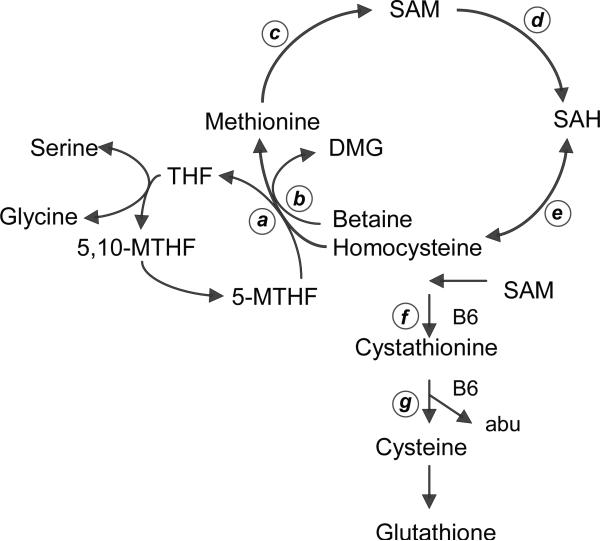Fig. 1. Methionine metabolism.
Homocysteine in the liver is converted to methionine by two reactions: methionine synthase (MS) (a) and betaine homocysteine methionine transferase (BHMT) (b). 5-methyltetrahydrofolate (MTHF) is a substrate for MS which produces tetrahydrofolate (THF). BHMT uses betaine as a substrate with production of dimethylglycine (DMG). Methionine is converted by methionine adenosyltransferase (MAT) (c) to S-adenosylmethionine (SAM), which is irreversibly converted to S-adenosylhomocysteine (SAH) by donating its methyl moiety to DNA methyltransferases (DNMTs) (d). SAH hydrolase (e) regulates the bi-directional reaction that leads to the synthesis of homocysteine from SAH or vice versa. The transsulfuration pathway is regulated by the vitamin B6-dependent enzymes cystathionine β synthase (f) and cystathionase (g) which both catalyze irreversible reactions. Alpha-aminobutyric acid (abu) is the collateral product of the reaction catalyzed by cystathionase.

